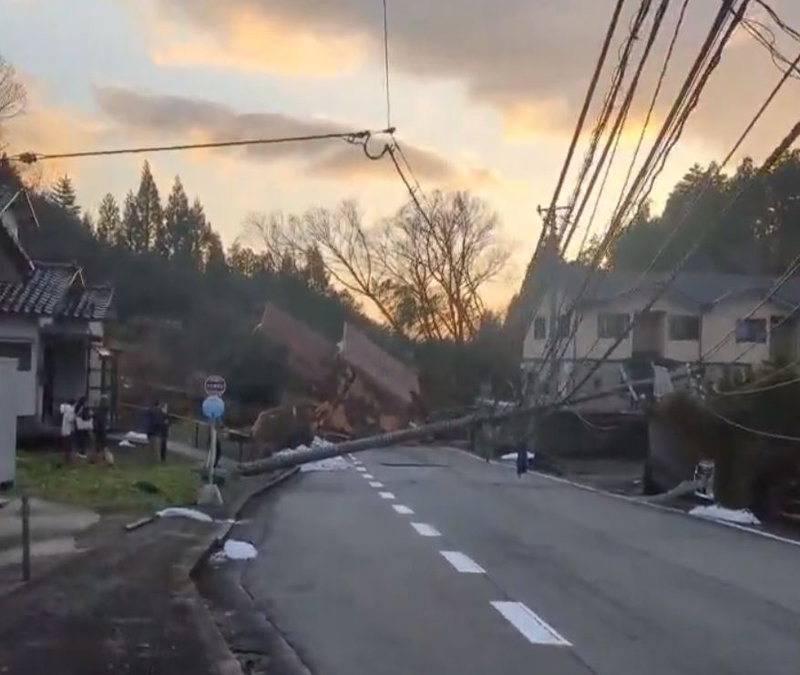There was a 7.1 earthquake in Toyama in 2007 as well.
The magnitude 7.4 (magnitude 7.6 announced by the Japan Meteorological Agency) earthquake that occurred in Toyama Prefecture, Noto Peninsula, Japan on New Year’s Day is the third most powerful earthquake that has occurred in Japan since 2000. In particular, when limited to earthquakes that occurred off the coast of Japan or on land, it was confirmed to be the strongest earthquake since the Great East Japan Earthquake in 2011.
According to the Meteorological Agency on the 1st, the strongest earthquake that has occurred in Japan since 2000 was the Great East Japan Earthquake that occurred in Sendai, Honshu, Japan on March 11, 2011. At that time, a powerful earthquake with a magnitude of 9.0 occurred, killing more than 15,000 people, generating a tsunami of more than 10 meters, causing the Fukushima nuclear power plant to explode, causing the worst damage.
In particular, the Great East Japan Earthquake occurred more than 190km away from Japanese waters, but it was so powerful that it caused significant damage to almost the entire Pacific coast of Japan.
The second strongest earthquake to occur in Japan since 2010 was the magnitude 8.5 earthquake on May 30, 2015. However, because this earthquake occurred in the sea 870km south of Tokyo, Japan, it did not leave any significant damage in Japan.
 On the 1st, while a tsunami warning was issued along the entire northwestern coast of Japan, electric poles and buildings collapsed in the Anamizu-machi area of Ishikawa Prefecture. X Capture
On the 1st, while a tsunami warning was issued along the entire northwestern coast of Japan, electric poles and buildings collapsed in the Anamizu-machi area of Ishikawa Prefecture. X CaptureThe earthquake that occurred on the 1st was the third strongest earthquake in Japan since 2010. In particular, because a strong earthquake occurred relatively close to the Toyama coast, 90km away, it is expected that considerable damage will occur in the coastal areas of Japan bordering the East Sea.
It is also unusual that a powerful earthquake of magnitude 7.0 or more occurred in the East Sea to the left of Japan, rather than the Pacific Ocean to the right. According to overseas earthquake statistics from the Korea Meteorological Administration, there have been a total of 33 strong earthquakes of magnitude 7.0 or greater that have occurred in Japan since 2000. Among these, only two earthquakes occurred on the west coast of north-central Japan (our East Sea side), the earthquake that occurred on March 25, 2007, and this earthquake. The earthquake that occurred in 2007 also occurred 93km off the coast west-northwest of Toyama and had a magnitude of 7.1 at the time.
As the number of earthquakes increases, their energy increases exponentially. When the magnitude increases by 0.1, the earthquake becomes 1.4 times stronger, and when the magnitude increases by 1, it becomes 32 times stronger. The maximum magnitude of the 2016 earthquake that occurred inland in Kumamoto, Fukuoka, Japan was 7.3. The earthquake that occurred in Toyama on the 1st is expected to be recorded as an earthquake about 1.4 times stronger than the Kumamoto earthquake, assuming a magnitude of 7.4 (the calculated magnitude of Korea and the United States), and about 2.8 times stronger than the magnitude of the 7.6 calculated by the Japan Meteorological Agency. .
Source: Donga
Mark Jones is a world traveler and journalist for News Rebeat. With a curious mind and a love of adventure, Mark brings a unique perspective to the latest global events and provides in-depth and thought-provoking coverage of the world at large.